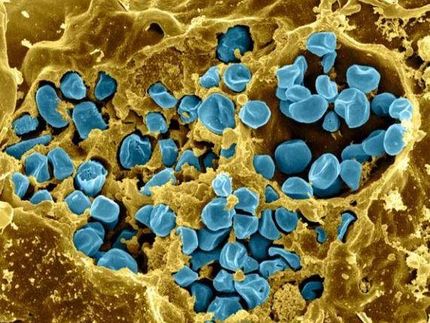Tuberculosis genomes portray secrets of pathogen's success
By any measure, tuberculosis (TB) is a wildly successful pathogen. It infects as many as two billion people in every corner of the world, with a new infection of a human host estimated to occur every second.
Now, thanks to a new analysis of dozens of tuberculosis genomes gathered from around the world, scientists are getting a more detailed picture of why TB is so prevalent and how it evolves to resist countermeasures. Writing in the journal Public Library of Science (PLoS) Pathogens, a team led by University of Wisconsin-Madison researcher Caitlin Pepperell describes a bacterium that marches in lockstep with human population growth and history, evolving to take advantage of the most crowded and wretched human conditions.
"It's as though the bacterium places bets on human behavior," says Pepperell, formerly of Stanford University, and now a professor of medicine and medical microbiology at UW-Madison. "It always bets that humans will go to war, send people to refugee camps, and gather in miserable places. Historically, that's been a winning bet on the bacterium's part."
The PLoS Pathogens study, whose senior author is Marcus Feldman of Stanford, reveals that tuberculosis experienced a 25-fold expansion worldwide in the 17th century, a time when human populations underwent explosive growth and European exploration of Africa, the Americas, Asia and Oceania was at its peak.
"The timing is coincident with expansion, urbanization and colonial migrations of global human populations," Pepperell explains. "These findings suggest that much of the current TB pandemic has its origins in historical events of the last three centuries."
TB is only transmitted by people, and the organism cannot survive in the environment. It thrives, however, in the crowded conditions of prisons, refugee camps and slums, and TB populations tend to be dominated by the bacteria "lucky" enough to land in those environments.
The analysis conducted by Pepperell and her colleagues focused on the role of natural selection, looking at patterns of genetic diversity among 63 TB and related pathogenic mycobacterial genomes gathered from around the globe.
The study shows a highly constrained bacterial genome, with most deleterious mutations quickly discarded. This was especially true for genes essential for causing disease, protein translation and the trafficking and metabolism of inorganic ions, which help control the interaction between the TB pathogen and its human host.
The bacterium's "defense" genes, on the other hand, showed a high degree of tolerance for beneficial mutations, which may play a role in evolution of drug resistance and evasion of the human immune system.
Pepperell notes: "Evolutionary theory predicts that Mycobacterium tuberculosis populations should be vulnerable to extinction. Yet it is obviously highly prevalent. It must have some incredibly clever strategies and tricks to hang on."
As a result, the explosive spread of TB parallels the growth of human populations and takes every advantage of a world where most people live in crowded and impoverished conditions.
The study, according to Pepperell, should help other researchers home in on genes that may be good candidates for targeting with new drugs, and aid disease control strategies that accommodate or even co-opt the bacterium's evolution and help drive its extinction.
Most read news
Organizations
Other news from the department science

Get the life science industry in your inbox
By submitting this form you agree that LUMITOS AG will send you the newsletter(s) selected above by email. Your data will not be passed on to third parties. Your data will be stored and processed in accordance with our data protection regulations. LUMITOS may contact you by email for the purpose of advertising or market and opinion surveys. You can revoke your consent at any time without giving reasons to LUMITOS AG, Ernst-Augustin-Str. 2, 12489 Berlin, Germany or by e-mail at revoke@lumitos.com with effect for the future. In addition, each email contains a link to unsubscribe from the corresponding newsletter.























































